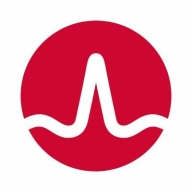

Automic Automation and Tidal by Redwood compete in the IT automation and workload management category. Based on feature diversity and scalability, Automic Automation seems to have the upper hand for complex infrastructure needs.
Features: Automic Automation offers a flexible IT automation solution with a central management system and extensive integrations across various OS platforms, including SAP and Oracle, without requiring server agents. Its robust auditing and version control features enhance troubleshooting capabilities, making it ideal for complex infrastructure handling. Automic's scalability and technology-agnostic nature allow it to fit seamlessly across different environments. Tidal by Redwood focuses on effective job scheduling and cross-platform workload automation, with features such as advanced job dependency management and real-time data tracking that benefit high-volume operations.
Room for Improvement: Automic Automation could enhance self-administration features, address stability issues, and improve integration with big data and cloud environments. Additionally, modernization of its user interface could increase user satisfaction. Tidal by Redwood would benefit from enhanced reporting capabilities, streamlined ease of use, and addressing user concerns about complexity and comprehensive training. Both solutions could focus on enhancing cloud capabilities and improving user interfaces for broader adoption and simplified operations.
Ease of Deployment and Customer Service: Automic Automation has a diverse deployment capability across hybrid, public, and private cloud environments, as well as on-premises options. Its customer service is generally well-received, with some variability in response times. Tidal by Redwood mainly focuses on on-premises and private cloud environments but supports hybrid models. Its customer service is highly rated, often going above and beyond compared to industry standards.
Pricing and ROI: Automic Automation is known for higher pricing due to its comprehensive feature set and targeted enterprise solutions. Its strong ROI through automation of complex workflows makes it valuable for large-scale operations despite potentially increasing licensing costs. Tidal by Redwood offers competitive pricing with flexible licensing models, positioning it as a feasible choice for budget-conscious organizations, while its comprehensive scheduling features ensure a strong ROI.
| Product | Market Share (%) |
|---|---|
| Automic Automation | 7.6% |
| Tidal by Redwood | 4.8% |
| Other | 87.6% |


| Company Size | Count |
|---|---|
| Small Business | 19 |
| Midsize Enterprise | 14 |
| Large Enterprise | 66 |
| Company Size | Count |
|---|---|
| Small Business | 3 |
| Midsize Enterprise | 6 |
| Large Enterprise | 38 |
Automic Automation offers a web-based GUI for high scalability and flexibility, integrating with platforms like SAP and Oracle. It promotes efficient process automation and supports multiple OS environments, benefiting diverse industries with its robust predictive capabilities.
Automic Automation facilitates process automation and workload management, providing valuable integration with applications like SAP and Oracle. It supports a wide range of operating systems and environments, enabling seamless workflow automation. It features a web-based interface accessible across devices, ensuring scalability and flexibility for complex job automation. Users find its predictive capabilities and platform support instrumental in enhancing operations, although improvements are noted in reporting, cloud integration, and documentation. Licensing and pricing structures also present room for optimization, along with workflow dependency management and smoother upgrade paths.
What are the key features of Automic Automation?Automic Automation sees implementation in industries like banking, finance, and telecommunications, where it automates ERP systems, schedules batch jobs, integrates workloads, and manages file transfers. By supporting SAP, Oracle, and ETL tasks, it aids efficiency and workload automation across varied environments including cloud and mainframe systems.
Tidal Software is a leading provider of enterprise workload automation solutions that orchestrate the execution of complex workflows across systems, applications and IT environments. With a comprehensive portfolio of products and services, Tidal optimizes mission-critical business processes, increases IT cost efficiencies and satisfies legal and regulatory compliance requirements. Hundreds of customers around the world count on Tidal for modernizing their workload automation and driving their digital transformation. Tidal Software is headquartered in Chicago with offices in Houston, London, Minsk, Belarus and Chennai, India. For more information, visit tidalsoftware.com.
We monitor all Workload Automation reviews to prevent fraudulent reviews and keep review quality high. We do not post reviews by company employees or direct competitors. We validate each review for authenticity via cross-reference with LinkedIn, and personal follow-up with the reviewer when necessary.